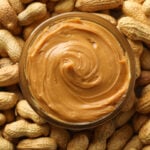In 1495, Leonardo da Vinci began what would become one of the most influential works of art in history – the Last Supper
The Last Supper is da Vinci’s visual interpretation of an event chronicled in all four Gospels (books of the Christian New Testament). The evening before Christ was betrayed by one of his disciples, he gathered them together to eat, told them he knew what was coming, and washed their feet (a gesture symbolizing that all are equal in the eyes of the Lord). As they ate and drank together, Christ gave the disciples explicit instructions about how to eat and drink in the future in remembrance of him. It was the first celebration of the Eucharist, a ritual still performed.
Da Vinci had never worked on such a large painting and had no experience in the mural environment of fresco. The painting was made using experimental pigments directly on the dry plaster wall and, unlike frescoes where pigments are mixed with wet plaster, it did not stand the test of time well. Even before it was finished, there were problems with the paint peeling off the wall and Leonardo had to repair it. Over the years it has been restored. Today we probably look at very little of the original.

Much of the recent interest in painting has focused on the details hidden in the picture. Leonardo was well known for his love of symmetry. In the Last Supper, the layout is largely horizontal. The painting is largely symmetrical with the same number of figures on each side of Jesus. The diagram above shows how the perspective of the painting was developed, with a series of marks at key points highlighting the architectural aspects of the composition and positioning of the figures.
Who’s Who in “The Last Supper”
Previously, only Judas, Peter, John and Jesus had been identified. From left to right, behind the heads of the apostles: Bartholomew, James, son of Alphaeus, and Andrew form a group of three. Judas Iscariot, Peter and John form another group of three.
The Secret of the Last Supper
The Last Supper is a popular religious scene painted by many famous artists. Unlike artists before and after him, Leonardo da Vinci chose not to put halos on Jesus. Many art historians believe that Leonardo da Vinci believed in nature, not God. For the famous painter, nature is God, so he treated each character in the fresco as an ordinary human being.
“The Last Supper is a failed experiment
Unlike traditional frescoes, which Renaissance masters painted on damp plaster walls, da Vinci experimented with tempura paint on a dry, sealed plaster wall in the monastery of Santa Maria delle Grazie in Milan, Italy. The experiment proved unsuccessful, however, as the paint did not adhere properly and began to peel off just a few decades after completion.
Spilled salt is symbolic
Speculation about symbolism in artwork abounds. For example, many scholars have discussed the significance of the salt container spilled near Judas’ elbow. The spilled salt could symbolize misfortune, loss, religion, or Jesus as the salt of the earth.
Eel or herring?
Scientists have also noted da Vinci’s choice of food. They dispute whether the fish on the table is herring or eel, because each has its own symbolic meaning. In Italian, the word for eel is “herring”. The similar word, “arringa”, means to indoctrinate. In the northern Italian dialect, the word for herring is “renga”, which describes someone who denies religion. This would fit Jesus’ biblical prediction that his apostle Peter would deny knowing him.
Da Vinci used a hammer and nail to help him achieve single-point perspective
What makes the masterpiece so striking is the perspective from which it is painted, which seems to invite the viewer to step directly into the dramatic scene. To achieve this illusion, da Vinci hammered a nail into the wall, then tied string to it to make marks that helped guide his hand in creating the painting’s angles.
The existing mural is not 100% the work of da Vinci
In the late 20th century, restorer Panin Brambilla Barcilon and his team relied on microscopic photographs, samples, infrared reflectoscopy and sonar to remove added layers of paint and restore the original as accurately as possible. Critics claim that only a fraction of the painting that exists today is the work of Leonardo da Vinci.
There are three early copies of the original
Three of da Vinci’s students, including Giampietrino, made copies of his painting in the early 16th century. Giampietrino made a large-scale copy, which is now in the Royal Academy of Arts in London. This oil painting on canvas was the main resource for the most recent restoration of the work. A second copy by Andrea Solari is in the Leonardo da Vinci Museum in Belgium, while a third copy by Cesare da Sesto is in the Church of San Ambrogio in Switzerland.
The painting is also a musical score
According to the Italian musician Giovanni Maria Pala, da Vinci incorporated musical notes into the Last Supper. In 2007, Pala created a 40-second melody from notes that would have been hidden in the scene.
The painting was a victim of neglect and abuse
In 1652, the monastery’s inhabitants cut a new door in the wall of the damaged painting, which removed a piece of the artwork showing the feet of Jesus. In the late 18th century, Napoleon Bonaparte’s soldiers turned the area into a stable and further damaged the wall with shells. During World War II, the Nazis bombed the monastery, making the walls out of rubble.

 Renault’s compact family SUV will be called the Symbioz -.
Renault’s compact family SUV will be called the Symbioz -. Peugeot and its new range of salt and pepper mills -.
Peugeot and its new range of salt and pepper mills -. A new Uber Eats ad is being criticized for showing a peanut allergy -.
A new Uber Eats ad is being criticized for showing a peanut allergy -. Pagani announces new track-based hypercar, known as the Huayra R Evo -.
Pagani announces new track-based hypercar, known as the Huayra R Evo -. Introducing the Oscars in the Best Casting category -.
Introducing the Oscars in the Best Casting category -.